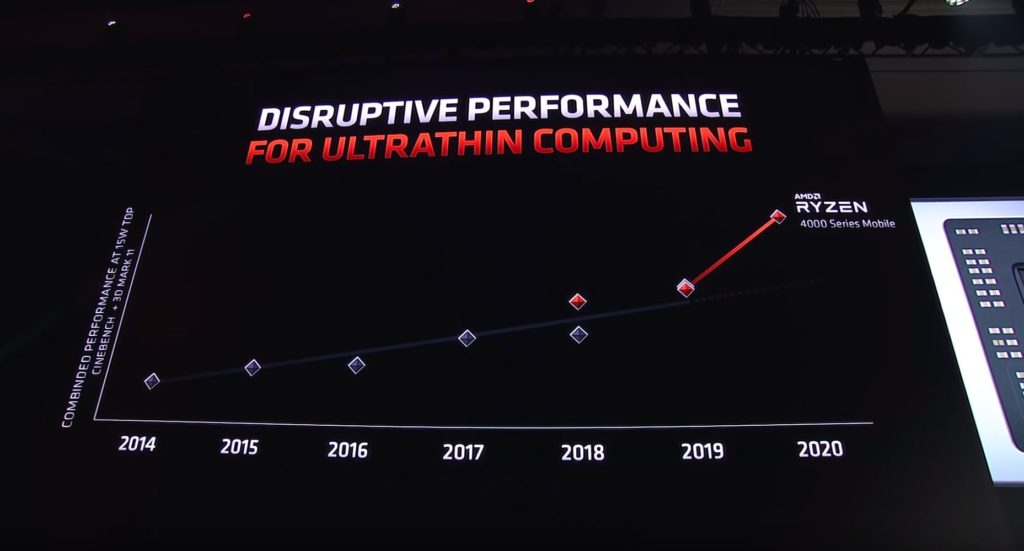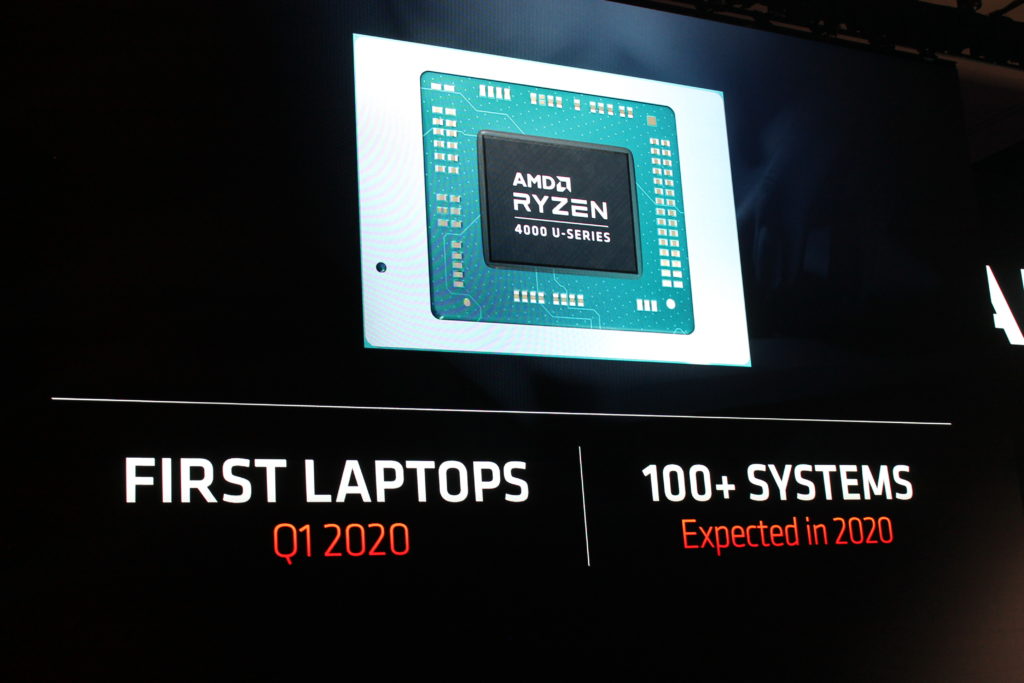Launching AMD Ryzen 4000 Mobile Processors
Announcing right now at CES, AMD is launching its 3rd gen (Zen 2 Cores) Ryzen 4000 Mobile Processors. These will be 7nm and will have 8 core / 16 threads for ultrathin and the thin and light market laptops.
Yes, the naming scheme is a bit off if you compare this to the desktop CPU variants. The mobile processors are named one number generation ahead of desktops, it can be a little confusing. Basically, the previous generation 3000 series APUs were Zen+ based (which matched the desktop 2000 series.) The new 4000 series mobile processors now only match the desktop’s Zen 2 Cores which is the 3000 series on the desktop side of things.

The Ryzen Mobile 4000 series will go across many different laptop markets. The U-Series indicates ultrathin consumer laptops, the H-Series for gaming and creator laptops and the Pro-Series for ultrathin professional laptops.
Onto the specifications, specifically, the top of the stack which is the AMD Ryzen 7 4800U (for the ultrathin and light laptops) will have 8 cores / 16 threads based on Zen 2. The base clock will be 1.8GHz with a boost clock up to 4.2GHz. It will have 8 Radeon Cores and of course a TDP of 15W. The interesting part here is that it can boost up to 4.2GHz, which is desktop-level frequency. In addition, the “Radeon Cores” are based on the Vega architecture but have had optimizations done so that they perform much better than the previous generation mobile Vega cores. AMD claims they have 59% better performance compared to the previous generation mobile processor.
David’s Notes: The 4800U’s 8 Radeon core count is two fewer than its predecessor. AMD is claiming that an individual core in the 4000 series is 59% faster than a 3000 series core even though they are still based on the Vega architecture. They attribute reduced power requirements through optimization and the move to the 7nm process that allows the higher level of performance (and higher sustained clock speeds). The aggregate performance increase is expected to be in the 30% range after the reduction in total graphics cores. With respect to Boostgate, AMD said that the 4.2Ghz boost clock should be achievable by the typical end user unlike the difficulties seen with the Ryzen 3000 desktop CPUs.
Performance versus the competition (Intel Icelake) is very competitive. Though the IPC isn’t a ton faster, AMD does have a slight edge in IPC on single-thread. However, it really outshines the competition in multi-thread performance thanks to having more cores and threads. The Radeon Cores in this APU are also much faster than the integrated graphics on the competition. Applications that creators use are heavily improved in performance due to the multi-threaded performance the new 4000 series can deliver. Lastly, the power efficiency gains are the best ever due to the 7nm process.
David’s Notes: The Ryzen 4000 series chips are monolithic dies with all components produced at 7nm.
AMD then went on to show actual laptop systems with Radeon Ryzen 4000 series mobile processors. These are built, and working and show the small form factor these powerful processors are able to run. In the first quarter of 2020, you’ll see over a dozen designs with the AMD Ryzen 4000 series, and throughout 2020 you’ll see over 100 designs of laptops in every market.
David’s Notes: The Lenovo Yoga Slim 7 will use the U series processors but allow them to run at 25W TDP. You can expect better overall performance out of such a configuration compared to a laptop that supports the 15W TDP instead. AMD said there will not be a large effort to differentiate the 4800U at 15W vs 25W, so if you’re laptop shopping, this may be an important detail for you to research before pulling the trigger if performance is a major concern.











